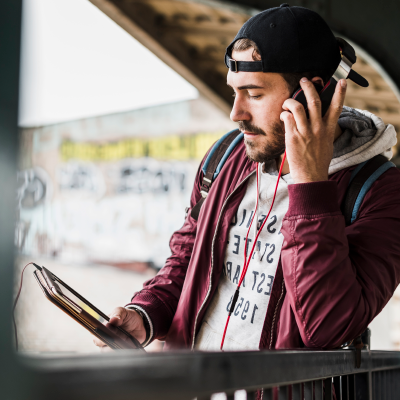Fostering Accessibility in Remote Learning: How to Level the Playing Field
People with disabilities face numerous challenges: navigating physical environments; confronting negative attitudes; accessing assistive tools. But things are changing. Legislation is in place to mandate compliance and diminish discrimination, while the social order is evolving to a more inclusive perspective, and technology is stepping up to overcome the barriers.
Educators have the privilege – and the responsibility – of helping to level the playing field as they prepare their students for meaningful careers. Designing course materials and choosing digital platforms, while monitoring participation and engagement, will ensure that no one is left behind.


Legal Requirements
There is a broad spectrum of disabilities defined within the Ontario Human Rights Code, the Accessibility for Ontarians with Disabilities Act (AODA), and the Canadian Charter of Rights and Freedoms. It can encompass physical, mental, sensory, learning, intellectual, mental health, communication, neurological, neurobehavioural, or other kind of disability.
Educational organizations are legally required to provide training resources, program information, evaluation methodology, and student records in an accessible format to comply with each person’s specific needs. This ensures that any user can see, hear, comprehend, and connect with the material, using assistive technology.
A developing framework for post-secondary education advocates adopting the three principles of Universal Design in Learning (UDL): multiple means of representation (delivering content through various formats), multiple means of expression (giving students options for interacting), and multiple means of engagement (stimulating enthusiasm for learning).
Tips for Accessibility
Communication is particularly critical for students with disabilities in the context of remote teaching. Centralized platforms, such as learning management systems, facilitate flexibility and ease of access to course materials. Check in regularly to make sure that they can digest the content and participate in group activities.
Organized structure, with clear and timely indications of expectations and due dates, will help students prepare for assignments, mindful of the assistive tools they may need. And assessment protocols should be reviewed to remove any barriers that could affect the performance of those with disabilities.
Transforming a classroom into a digitally accessible experience may seem daunting, especially if an instructor relies on past material that isn’t compliant. But it is an opportunity to take another look at course content, refreshing some of it, and abandoning what is outdated. These tips may be useful for the transitional journey.
- Start with newly created resources, then gradually adapt and integrate the legacy content.
- Check in and collaborate with your partners in education to learn about the accessibility of their materials; for example, learning management systems, publisher courseware, or on-campus centres.
- Incorporate alternate formats such as Braille, large-print text, audio recordings, or text-to-speech software.
- Use rich-text editors, but be cautious about formatting: creating space through the space bar or line breaks can cause issues for screen readers, while underlined text can be interpreted as hyperlinks.
- Choose san serif typefaces for clarity (ex. Arial rather than Times Roman), and ensure that the font size can be adjusted.
- Make sure that colours are vividly contrasted, and avoid combining red and green.
- Apply alternate text (ALT tags) to describe graphics or photographs.
- Because screen readers cannot interpret PDF or scanned documents, offer alternate versions in Word or HTML.
- Include high-quality captions and transcripts for video or audio presentations
- Identify speakers and insert pauses when recording videos, so that described video for actions or images can be added for students with low vision.
This thoughtful preparation will inspire and encourage the learners who are working hard to achieve their dreams. And alternative formats can also support those beyond the margins of disability; for instance, many people absorb audio content more effectively when paired with visual transcripts. The accelerated mandate to provide universally designed, digitally accessible programs through remote delivery may well smooth the way for everyone who processes content differently, elevating the art of teaching to new plateaus.



